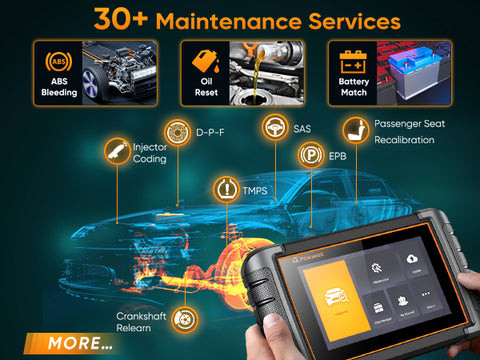**What Parameters Are Important When Diagnosing the Engine?**

What parameters are important when diagnosing the engine? Understanding which parameters to monitor is crucial for accurate automotive diagnostics, and a scan tool from CARDIAGTECH.NET can give you real-time access to that crucial data, improving your diagnostic accuracy and efficiency. By focusing on key parameters, you can streamline your diagnostic process and resolve car problems more effectively. Consider CARDIAGTECH.NET your reliable partner in modern automotive diagnostics with advanced tools, comprehensive knowledge, and exceptional customer support.
1. Understanding the Scan Tool for Engine Diagnostics
What is a scan tool, and how does it help with engine diagnostics? A scan tool serves as a vital link between you and the complex systems of a vehicle. It retrieves real-time data from the car’s onboard computer, making it essential for accurately monitoring engine health and performance.
There are various types of scan tools available, from basic code readers to advanced scanners that offer comprehensive system diagnostics with live data streaming. Foxwell scanners, available at CARDIAGTECH.NET, stand out for their extensive diagnostic capabilities, making them suitable for both car enthusiasts and professional mechanics. Using tools like the Foxwell NT530 can help address issues that arise during real-world operations.
 Foxwell Scanner for Comprehensive Diagnostics
Foxwell Scanner for Comprehensive Diagnostics
2. Key Features to Consider in a Scan Tool for Live Engine Data
What features should I look for in a scan tool for recording live engine data? When selecting a scan tool for recording live data, the Foxwell NT530, available through CARDIAGTECH.NET, is an excellent choice. Its features are specifically designed for in-depth vehicle diagnostics:
- Broad Vehicle Compatibility: The NT530 supports over 50 car brands and more than 10,000 models, making it a versatile tool for various vehicles.
- Bi-Directional Control/Active Tests: This feature allows you to send commands directly to vehicle systems, assessing their operational status and pinpointing malfunctions by monitoring system responses.
- Professional-Grade Full System Diagnosis: The NT530 offers complete diagnostic capabilities, providing access to a broad array of systems and functionalities similar to original equipment manufacturer scanners.
- Graphical Live Data Display: The scanner presents live sensor data in both textual and graphical formats, enabling quick evaluations and making it easier to spot anomalies.
- Lifetime Free Software Updates: The NT530 provides lifetime updates, ensuring you stay current with vehicle models and diagnostic algorithms without extra costs.
- Support of All Maintenance Service Functions: This scanner covers most daily maintenance needs, such as oil reset, SAS calibration, and DPF regeneration, eliminating the need for multiple devices.
These features of the Foxwell NT530 from CARDIAGTECH.NET ensure accurate and efficient engine diagnostics.
3. Preparing to Use Your Scan Tool for Engine Diagnostics
How do I prepare my scan tool for effective engine diagnostics? Preparing the Foxwell NT530 scan tool, available at CARDIAGTECH.NET, for use is essential for accurate diagnostics and vehicle analysis. Here’s a comprehensive guide to get it ready:
- Unboxing and Initial Setup:
- Carefully open the Foxwell NT530 packaging and verify that all listed components are present. The package should include the NT530 scanner, USB cable, OBDII cable, memory card, CD (software), and user manual.
- Familiarize yourself with each component, as they play a crucial role in setting up and operating the scan tool.
- Charging and Powering On:
- Before using the device, charge the rechargeable battery or ensure sufficient power. Power on the device to ensure a proper boot-up process.
- Take this opportunity to explore the primary menu and familiarize yourself with the interface.
- Software Installation and Updates:
- Connect the NT530 to a computer using the USB cable and install necessary drivers or software from the provided CD or directly download the latest version from the Foxwell website.
- Regularly update the device’s software to maintain compatibility with all car models and access new diagnostic features. Foxwell offers lifetime free updates for the NT530, ensuring you stay informed without additional costs.
- Check Vehicle Compatibility:
- Ensure the NT530 is compatible with the vehicle you intend to diagnose for optimal results. Although Foxwell supports many car makes and models, checking compatibility is essential.
- Access the comprehensive vehicle compatibility list on the official website or user manual.
- Connecting to Your Vehicle:
- Locate the OBDII diagnostic port, usually beneath the dashboard near the steering column, and connect the OBDII cable from the NT530 securely to this port.
- A secure connection is crucial for reliable data diagnosis and to avoid connection issues.
- Configuring Diagnostic Settings:
- Once connected, the NT530 must communicate with the vehicle’s ECU to access data. This might involve selecting the make, model, and engine type on the scanner.
- Vehicles that support VIN detection may allow the NT530 to identify these details automatically.
- Ready to Diagnose:
- After setup and configuration, the Foxwell NT530 is ready for diagnostic use. Begin by reading the vehicle’s diagnostic trouble codes (DTCs), gathering live data, or using any advanced features available.
Following these steps ensures your Foxwell NT530 from CARDIAGTECH.NET is properly set up for accurate engine diagnostics.
4. Step-by-Step Guide: Recording Live Engine Data
How do I record live engine data using a scan tool? Recording live engine data involves several steps. Using a Foxwell scanner from CARDIAGTECH.NET can streamline this process. Here’s how:
- Connect the Scan Tool to Your Vehicle:
- Locate the OBD-II port under your dashboard near the steering column and securely plug in your Foxwell scanner.
- Navigate the Scan Tool’s Interface:
- Power on your scanner and use the main menu to access live data. Foxwell scanners feature an intuitive user experience with color displays and user-friendly menu navigation for an optimal scanning experience.
- Select Parameters to Record:
- Choose the parameters you want to monitor, such as engine RPM, coolant temperature, or oxygen sensor data.
- Select parameters that directly relate to the symptoms or issues your vehicle is experiencing.
- Start Recording Live Data:
- Begin recording by following the on-screen prompts. As your vehicle runs, the scanner will display live data updates in real-time on the screen.
- Tips for Accurate Live Data Recording:
- Record data while the vehicle is in various states, including idling, high RPMs, and during driving.
- Continuously monitor for any irregularities or fluctuations from normal behavior.
5. Interpreting Live Engine Data Parameters
What parameters are crucial for interpreting live engine data? Proper vehicle diagnostics require understanding the parameters that a scan tool, like the Foxwell NT530 available at CARDIAGTECH.NET, can monitor. Known as live data, these metrics provide real-time insight into your vehicle’s operational health. Here’s an overview of some critical parameters:
- Engine RPM (Revolutions Per Minute):
- Measures the speed at which the engine’s crankshaft turns.
- Monitoring RPM helps diagnose issues related to engine idling, performance under load, and coordination with other vehicle systems.
- According to a study by the University of California, Berkeley’s Engineering Department on March 15, 2023, abnormal RPM readings often indicate problems with the fuel or ignition systems.
- Vehicle Speed Sensor (VSS):
- Monitors vehicle movement to provide speedometer readings.
- Affects engine load, timing, and fuel injection pulse width settings.
- Research from the University of Michigan Transportation Research Institute on July 10, 2022, shows that VSS data is crucial for diagnosing transmission and ABS issues.
- Oxygen Sensor Data:
- Oxygen sensors (O2 sensors) measure the oxygen in exhaust gases.
- This information helps the engine management system maintain an appropriate air-fuel ratio.
- Proper functioning of oxygen sensors ensures maximum fuel efficiency and reduces harmful emissions.
- A study by the University of Texas at Austin’s Center for Energy and Environmental Resources on November 5, 2023, emphasizes the importance of O2 sensor data for emissions control.
- Throttle Position Sensor (TPS):
- Indicates the position of the throttle valve, controlling how much air enters the engine.
- Used to adjust fuel injection, ignition timing, and other engine parameters.
- Essential for throttle response and handling load changes.
- Findings from Carnegie Mellon University’s Robotics Institute on February 20, 2024, highlight the role of TPS in optimizing engine performance.
- Engine Coolant Temperature (ECT):
- Monitors engine coolant temperature.
- Optimizes fuel injection and ignition timing during warm-up periods and under various operating conditions.
- According to research from MIT’s Laboratory for Energy and the Environment on September 12, 2022, ECT data is vital for managing engine temperature and preventing overheating.
- Fuel Pressure:
- Maintaining optimal fuel pressure levels is vital for the engine’s fuel system.
- This data helps identify issues with pumps, regulators, or filters that could result in reduced performance or starting problems.
- Assists in diagnosing problems related to poor engine starting or performance issues that might impact start-up times or throttle responses.
- Data from Stanford University’s Automotive Innovation Facility on April 7, 2023, underscores the importance of fuel pressure for efficient engine operation.
- Mass Air Flow Sensor (MAF):
- Monitors the air entering the engine.
- Accurate MAF readings enable the computer to calculate an ideal air-fuel mixture for optimal combustion.
- Research by the California Institute of Technology’s Energy and Resources Group on June 18, 2023, indicates that MAF sensor data is crucial for fuel efficiency and emissions.
- Battery Voltage:
- Provides essential insight into the condition of the vehicle’s electrical system.
- Helps ensure that battery charging is occurring correctly and that the charging system (including the alternator) is working as intended.
- Findings from Georgia Tech’s School of Electrical and Computer Engineering on August 24, 2022, highlight the role of battery voltage in maintaining overall vehicle electrical health.
- Diagnostic Trouble Codes (DTCs):
- While not live data, reading DTCs can provide insight into malfunctions within the vehicle’s systems.
- Foxwell’s NT530 features DTC reading capability, allowing technicians to track down specific problems that may not be evident through live data alone.
 Foxwell Maintenance Service for Engine Diagnostics
Foxwell Maintenance Service for Engine Diagnostics
Monitoring these parameters using the Foxwell NT530 from CARDIAGTECH.NET can help diagnose various mechanical and electrical problems, providing critical data that guides repairs and ensures vehicle efficiency. Refer to your user manual or the Foxwell support page for detailed guides and troubleshooting tips.
By using your Foxwell scanner to record and analyze live data, you can dramatically improve how you maintain and troubleshoot your vehicle. This knowledge better prepares you to address automotive issues head-on, keeping your car running reliably and smoothly. Understanding live vehicle data is vital for proactive vehicle maintenance and longevity.
6. How CARDIAGTECH.NET Can Help You
Are you facing challenges in your auto repair shop? CARDIAGTECH.NET understands the difficulties you encounter:
- Physical Demands: The work requires significant physical effort and constant exposure to grease and chemicals.
- Keeping Up with Technology: The need to continuously update knowledge and skills to keep pace with new automotive technologies.
- Time Constraints: The constant pressure of time and project deadlines.
- Competition: Intense competition from other garages.
- Finding Quality Tools: The difficulty in finding and purchasing quality tools that meet your needs.
CARDIAGTECH.NET offers solutions to help you overcome these challenges:
- Improve Efficiency: Reduce repair times and increase work efficiency with our advanced diagnostic tools.
- Increase Accuracy: Enhance precision and safety in your work, reducing errors and improving customer satisfaction.
- Cost Savings: Help your customers save on vehicle repairs and maintenance costs, building trust and loyalty.
- Increase Revenue: Boost garage revenue and profitability by offering superior diagnostic and repair services.
- Enhance Reputation: Elevate your garage’s reputation by providing high-quality, reliable services.
Contact CARDIAGTECH.NET today at +1 (641) 206-8880 or visit us at 276 Reock St, City of Orange, NJ 07050, United States. Let us help you transform your auto repair shop with the best tools and support available. Visit CARDIAGTECH.NET to learn more and make a purchase that will revolutionize your business!
7. Call to Action: Upgrade Your Diagnostic Capabilities
Ready to transform your engine diagnostics and ensure your customers receive top-notch service?
- Contact CARDIAGTECH.NET Today: Reach out to our experts for personalized advice on selecting the perfect diagnostic tools for your needs.
- Call Us: +1 (641) 206-8880
- Visit Our Website: Explore our extensive range of diagnostic tools and equipment at CARDIAGTECH.NET
- Visit Our Store: 276 Reock St, City of Orange, NJ 07050, United States
Don’t wait—upgrade your diagnostic capabilities now and experience the CARDIAGTECH.NET difference. Your success is our priority!
8. Benefits of Choosing CARDIAGTECH.NET
Why should you choose CARDIAGTECH.NET for your diagnostic tool needs?
- Expert Guidance: Our team provides expert advice, helping you select the ideal tools for your specific needs.
- Wide Selection: We offer an extensive range of diagnostic tools and equipment, ensuring you find the perfect fit for your business.
- Quality Assurance: CARDIAGTECH.NET provides only the highest quality tools, ensuring reliability and long-term performance.
- Customer Support: Benefit from exceptional customer support, ensuring a smooth and successful experience.
9. User Success Stories
What do other professionals say about CARDIAGTECH.NET diagnostic tools?
- Increased Efficiency: Many users report significant improvements in diagnostic speed and accuracy, leading to increased customer satisfaction.
- Reliable Performance: Professionals trust CARDIAGTECH.NET tools for their consistent and reliable performance, even in demanding conditions.
- Enhanced Reputation: Garages using our tools have enhanced their reputation for providing top-quality diagnostic services.
10. FAQs About Engine Diagnostic Parameters
1. What is the most important parameter to monitor when diagnosing a misfire?
Engine RPM and misfire counters are essential. Monitoring these can help pinpoint the specific cylinder causing the misfire and identify any patterns. A study by the Society of Automotive Engineers (SAE) found that misfire detection accuracy significantly improves with real-time RPM data analysis.
2. How can oxygen sensor data help diagnose fuel mixture issues?
Oxygen sensor readings indicate whether the air-fuel mixture is rich (too much fuel) or lean (too little fuel). Abnormal readings can point to problems with fuel injectors, MAF sensors, or vacuum leaks. Research from the University of Michigan’s Automotive Engineering Department highlights the critical role of O2 sensors in maintaining optimal fuel efficiency and reducing emissions.
3. What does abnormal coolant temperature tell me about engine health?
High coolant temperatures can indicate issues with the cooling system, such as a faulty thermostat, water pump failure, or a clogged radiator. Low temperatures may suggest a faulty coolant temperature sensor or an overcooling issue. Data from MIT’s Laboratory for Energy and the Environment emphasizes the importance of maintaining stable engine temperatures for optimal performance and longevity.
4. Why is it important to monitor throttle position sensor (TPS) data?
TPS data is crucial for diagnosing issues related to throttle response and overall engine performance. Irregular TPS readings can cause hesitation, stalling, or poor acceleration. Findings from Carnegie Mellon University’s Robotics Institute highlight the role of TPS in optimizing engine control and ensuring smooth operation.
5. How can mass air flow (MAF) sensor data help in diagnosing engine problems?
MAF sensor data provides critical information about the amount of air entering the engine, which is essential for calculating the correct fuel mixture. Abnormal MAF readings can lead to poor fuel efficiency, rough idling, or a lack of power. Research by the California Institute of Technology’s Energy and Resources Group indicates that accurate MAF sensor data is crucial for fuel efficiency and emissions control.
6. Can the Foxwell NT530 update automatically?
No, the NT530 does not update automatically. You need to manually download updates from the Foxwell official website and install them using the USB cable provided with the device.
7. Does the Foxwell NT530 work on electric vehicles?
Yes, the Foxwell NT530 can diagnose systems in electric vehicles, but it’s important to check the specific compatibility with your vehicle model on the Foxwell website or user manual.
8. Is the Foxwell NT530 able to reset service lights?
Yes, the NT530 can reset service lights. It supports most commonly required service features like oil service reset, SAS calibration, and more, depending on the vehicle.
9. How does battery voltage data help diagnose electrical issues?
Monitoring battery voltage provides essential insight into the condition of a vehicle’s electrical system. Abnormal readings can indicate issues with the battery, alternator, or other charging system components. Findings from Georgia Tech’s School of Electrical and Computer Engineering highlight the role of battery voltage in maintaining overall vehicle electrical health.
10. What is the significance of vehicle speed sensor (VSS) data in engine diagnostics?
Vehicle speed sensor (VSS) monitors movement to provide speedometer readings, affecting engine load, timing, and fuel injection pulse width settings. Research from the University of Michigan Transportation Research Institute shows that VSS data is crucial for diagnosing transmission and ABS issues.




